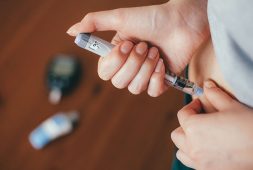
In an interview with the Brisbane Times, an Australian ophthalmologist and biotech entrepreneur shares his vision for a world where curing blindness in millions of people is achievable with cell replication and a 3D printer.
Professor Gerard Sutton, co-founder of Bienco, claims that the company now possesses both physical and intellectual products that will soon enable the mass production of natural corneas for transplantation into the blind.
Cornea transplantation, the most common method of restoring lost sight, is a complex procedure that relies on donors. Damage or disease to the cornea, the thin, transparent “windscreen” of the eyeball, is a leading cause of non-hereditary blindness worldwide.
During the interview, Sutton’s voice trembles as he recounts a trip to Myanmar in 2004, where he aimed to help those affected by blindness resulting from the previous civil war. Carrying four donated corneas from the NSW Eye Bank, he arrived at a clinic where 1,000 people were waiting, thanks to a small article in a local paper. Out of the thousand blind individuals, he had to select only four recipients for transplant, ultimately choosing younger people.
This experience was transformative for Sutton, and a similar situation occurred during a follow-up trip to Cambodia. It made his realize that he needed to take action, something “out of left field,” to send as many corneas to these regions as needed.
Professor Damien Harkin, who is a part of Bienco’s staff based at the Queensland University of Technology, said, “At present, there is only one donor cornea available globally to treat every 70 people requiring a corneal transplant.”
“Through laboratory cultivation we estimate that a single donor cornea could provide treatment for 30 people,” Harkin added.

Bienco’s artificial corneas are constructed from collagen, the same proteins found in hair, skin, nails, and connective tissue. However, collagen tends to create opaque tissue, resembling our skin, so the initial challenge was to make it transparent.
Once this hurdle was overcome, Professor Sutton and other members of Bienco, like Professor Harkin, had to devise a method for applying multiple layers of collagen to create a transplantable corneal structure.
In 2021, Sutton successfully persuaded the Medical Research Future Fund, established by the Australian treasurer, to provide backing for Bience, amounting to AUD $35 million.
With this substantial injection of funds, Sutton believes they are “three to four years” away from achieving their goals and positioning Australia as the epicenter of bioengineering globally.



